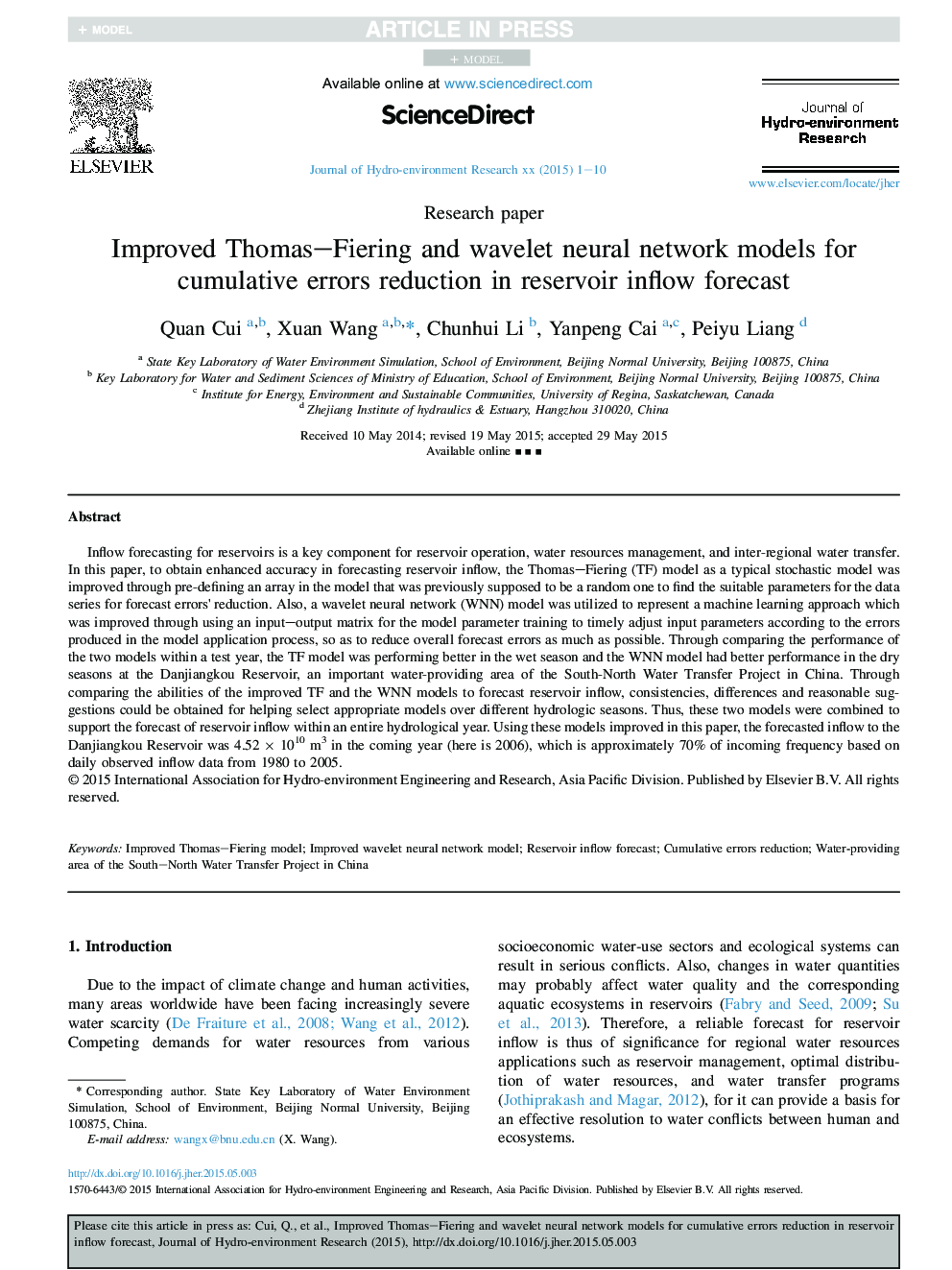| Article ID | Journal | Published Year | Pages | File Type |
|---|---|---|---|---|
| 6368762 | Journal of Hydro-environment Research | 2016 | 10 Pages |
Abstract
Inflow forecasting for reservoirs is a key component for reservoir operation, water resources management, and inter-regional water transfer. In this paper, to obtain enhanced accuracy in forecasting reservoir inflow, the Thomas-Fiering (TF) model as a typical stochastic model was improved through pre-defining an array in the model that was previously supposed to be a random one to find the suitable parameters for the data series for forecast errors' reduction. Also, a wavelet neural network (WNN) model was utilized to represent a machine learning approach which was improved through using an input-output matrix for the model parameter training to timely adjust input parameters according to the errors produced in the model application process, so as to reduce overall forecast errors as much as possible. Through comparing the performance of the two models within a test year, the TF model was performing better in the wet season and the WNN model had better performance in the dry seasons at the Danjiangkou Reservoir, an important water-providing area of the South-North Water Transfer Project in China. Through comparing the abilities of the improved TF and the WNN models to forecast reservoir inflow, consistencies, differences and reasonable suggestions could be obtained for helping select appropriate models over different hydrologic seasons. Thus, these two models were combined to support the forecast of reservoir inflow within an entire hydrological year. Using these models improved in this paper, the forecasted inflow to the Danjiangkou Reservoir was 4.52Â ÃÂ 1010Â m3 in the coming year (here is 2006), which is approximately 70% of incoming frequency based on daily observed inflow data from 1980 to 2005.
Related Topics
Life Sciences
Agricultural and Biological Sciences
Agricultural and Biological Sciences (General)
Authors
Quan Cui, Xuan Wang, Chunhui Li, Yanpeng Cai, Peiyu Liang,
